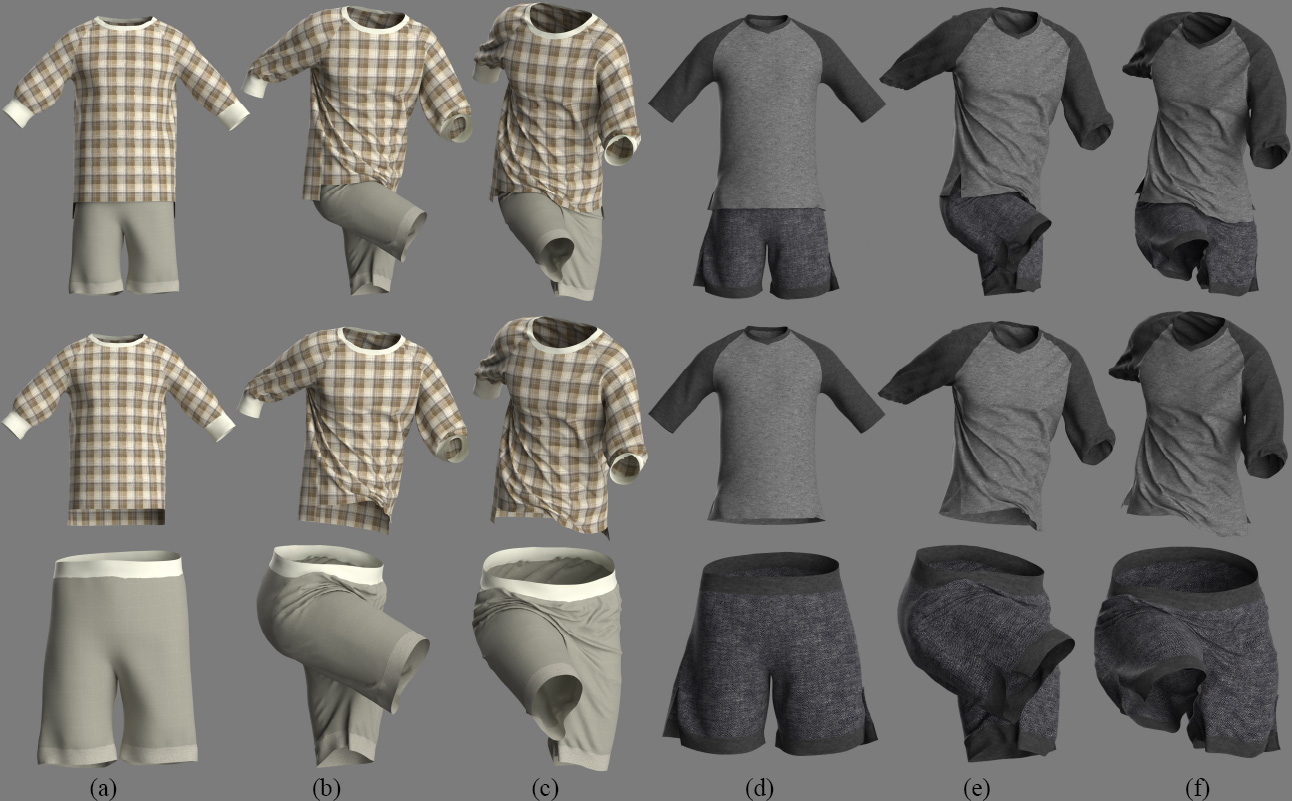Automatic Pose and Wrinkle Transfer for Aesthetic Garment Display
Computer-Aided Geometric Design, 2021, 89: 102020.
Luyuan Wang, Honglin Li, Qinjie Xiao, Xinran Yao, Xiaoyu Pan, Yuqing Zhang, Xiaogang Jin

From top to bottom in each row: men's sports suits, top garment of men's sports suits, and bottom of men's sports suits. For men's sports suits, we show the top and bottom garment separately in two rows. The three columns on the left represent source garments, and the three columns on the right represent target garments. In columns (a) and (d), we show the reference model of each group of garments. In columns (b), (c) and (e), (f), we show the same models from two different perspective views. Columns (b) and (c) are the manually-sculpted deformed garments, and columns (e) and (f) are the outputs of our method.
Abstract
We present an automatic
and semantic pose and wrinkle transfer method from one garment onto another
for aesthetic display, which is previously performed by professional artists
using a knowledge-intensive and time-consuming process. Given a source
garment model with fine wrinkle details in a specific pose and another
target garment model with a similar style in a neutral pose but without fine
wrinkle details, our approach can automatically transfer the pose and
wrinkle details faithfully from the source to the target using a two-stage
process. In the semantic correspondence establishment stage, we construct a
dense correspondence between the source and the target by utilizing their
semantic information in 2D patterns. Specifically, we first obtain the
initial correspondence points on the paired 2D patterns by leveraging their
semantic information. These marker points, which act as constraints, are
mapped to their corresponding 3D models. We then establish their
per-triangle correspondence using a non-rigid Iterative Closest Point (ICP)
algorithm. In the deformation transfer stage, we transfer the pose and
wrinkle details from the source to the target by solving an optimization
problem. Extensive experiments validate that our method is able to generate
better results compared to state-of-the-art methods, and it can lead to
significant time savings for fashion designers.